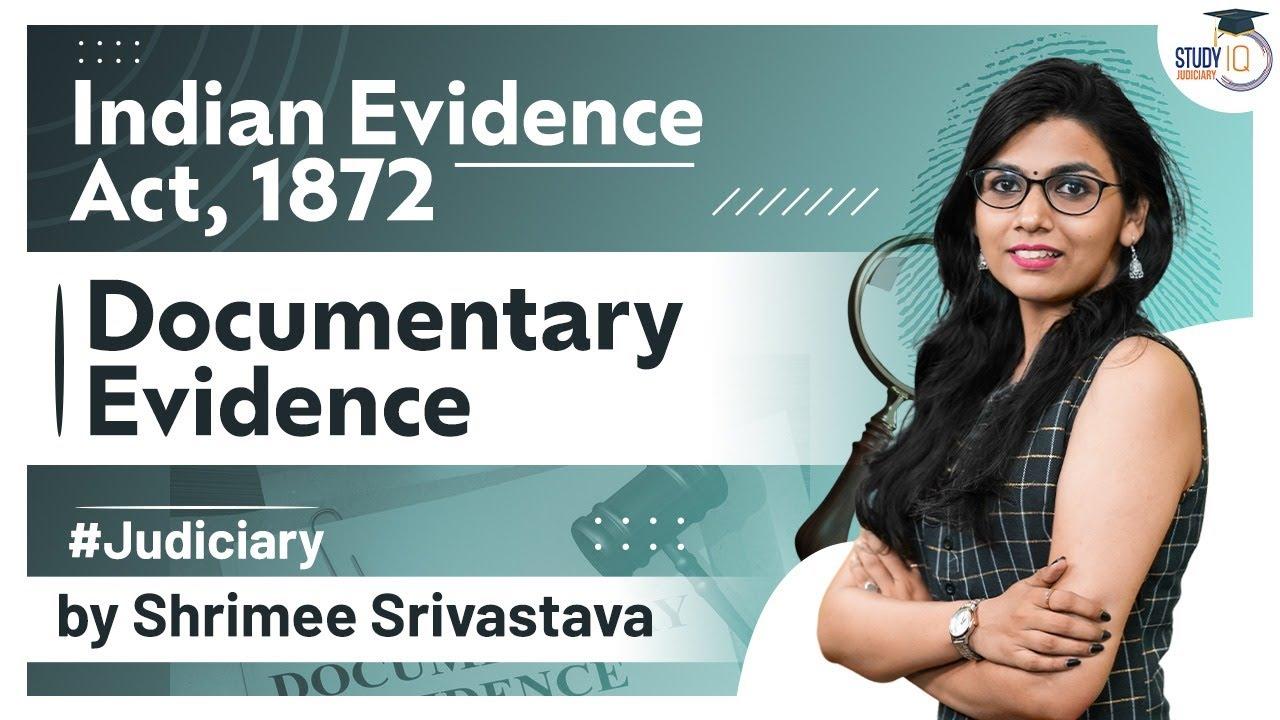Table of Contents
Documentary evidence
- Section 3 defines documentary evidence – All documents presented before the court for inspection, to demonstrate or show a reality are called documentary evidence.
- Chapter 5 of the Indian Evidence Act deals with documentary evidence.
- Section 61 to 90A falls under this chapter.
- Sections 61 to 73A deal with the general rules for proving documentary evidence in various cases
- Specifically Sections 61-66 of the Act, which gives answers to the questions that how the contents of a document are to be proved.
- The content of documentary evidence can be separated into three sections that are:
- How can the subject matter of a document be demonstrated?
- How the record is to be proved to be authentic?
- How far and in what instance oral evidence is excluded by documentary evidence?
- Sections 74 to 78 deal with public documents.
- Section 79 to 90-A deal with presumptions as to documents.
- Spoken Word will Vanish, but the Written Word Remains.
- Hence the law of evidence recognizes the superiority and credibility of documentary evidence as against oral evidence.
Public Documents (Section 74)
- A public document is a reproduction of an entry contained in some kind of public register, book or record relating to relevant facts or a certified copy issued by an authority.
- Documents such as a birth certificate, marriage certificate, a bill of a public water utility, an FIR filed before the police station etc are some examples of public documents.
Private Documents (Section 75)
- Documents like letters, agreements, emails, etc. which are exchanged between contesting parties to a litigation are private documents.
- Courts generally lean in favour of accepting public documents more readily than private documents as the presumption is that the risk of tampering with public documents is far less.
Section 61 provides that the contents in documentary evidence can be proved by
- a) Primary Evidence (Section 62)
- These are the “original documents” that are produced in the court for inspection.
- There are 2 special circumstances explained under this section:
- When a document is executed in parts. In such cases, each part is the primary evidence of the document.
- Where several documents are made by one uniform process such as printing, lithography or photography, each is the primary evidence for the contents of the rest.
- b) Secondary Evidence (Section 63)
- Section 63 of the Act provides Secondary Evidence.
- Secondary evidence means and includes:
- Certified copies.
- Copies made from the original using a mechanical process while ensuring the accuracy of the copy.
- Copies made from and compared with the original.
- Oral accounts of the contents of a document given by some person who has seen it.
- When the contents of a document are to be verified by oral evidence then such document becomes secondary evidence.
Download| Free PDF






















 WhatsApp
WhatsApp